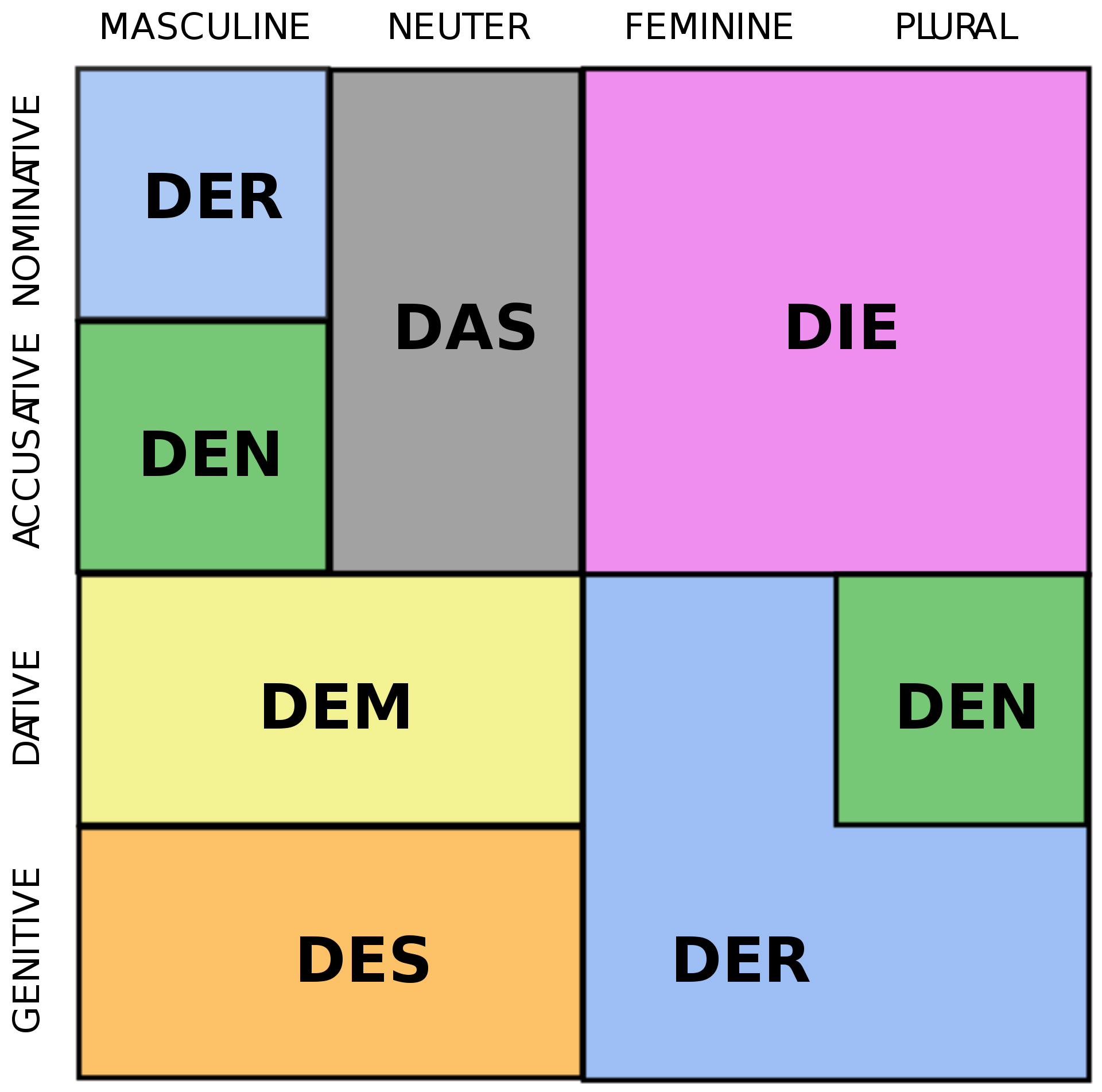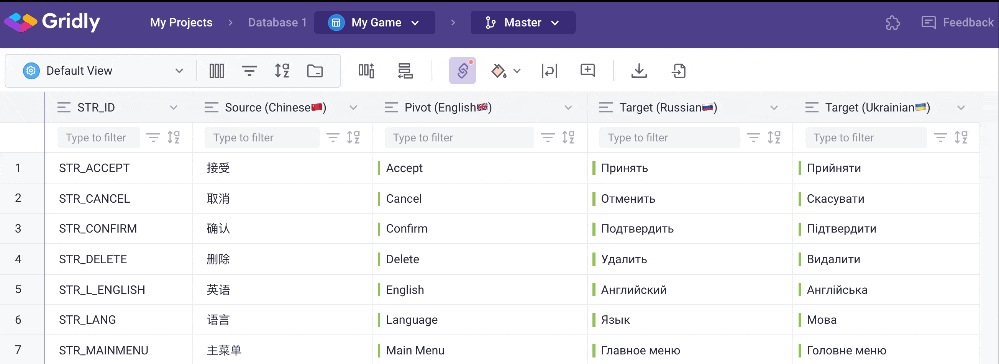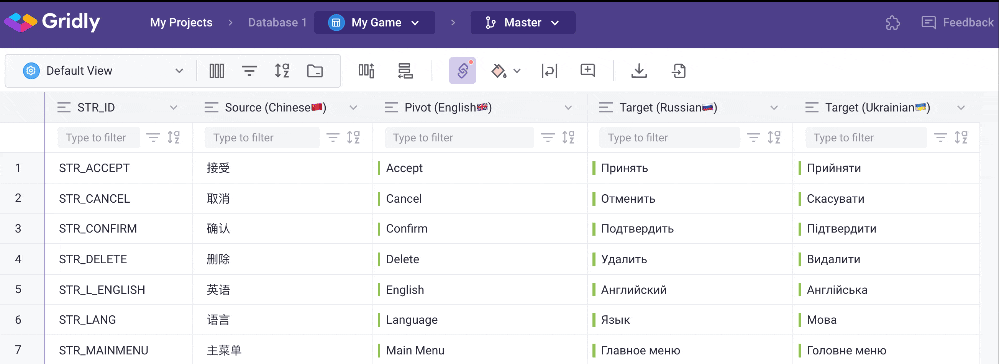In the games industry (as well as the general localization field), English is referred to as a lingua franca. Games can however be developed in many languages and not just English. This is very much the case in countries like Russia, China, Korea, or Japan. Pivot translation is a cost-savvy approach for the localization of non-English games.
(This blog was initially published at the Gridly website - the first headless CMS in the world tailor-made for game development.)
At the moment the company chooses to localize the game, it has the option of going for direct translations to target languages or will use a multistep translation alongside a pivot language.
A pivot (bridge) language is one that connects a language pair.
An example is the Japanese game Final Fantasy II which was localized for a North American audience (with extra game features). English was used as the source text for subtitles in other European languages.


Pivot localization from Chinese into Russian with English as a bridge. Image: Gridly
Pros of language pivoting
Direct translation is always preferable as the resulting text will undoubtedly be closer to the original source and minimize the risk of errors. However, sometimes it’s just not possible.
Finding the language resource can be difficult. For example, it’s a lot easier to find linguists to work with Chinese>English and English>Italian language pairs than Italian translators translating directly from Chinese. This is further complicated by then needing to find linguists who are also video game localization specialists from that specific language pair pool.
This is what the pivot language localization sequence looks like:
Source language → Pivot (bridge) language → Target languages
With respect to the case mentioned above, the workflow of the pivot localization will be:
Chinese → English → Italian (and other languages).
Direct translation may be used by the game and localization industries for a few language pairs and use a pivot language for the rest. This happens when resources are sufficient and they want to speed up translations into some languages rather than waiting for pivot translation to be up and running.
For example, a localization request for a game developed in Chinese would require a direct translation from Chinese to English, Japanese, and Korean. English will be used as a pivot language for translation into FIGS etc.
Issues with pivot translation
The logic behind pivot language localization is simple, but its usage causes a number of issues which are:
1.The pivot language that is reproduced in the target languages could be mistranslated.
With pivot localization, the risk of mistranslation is high and this is a common issue. Any mistake that is made in the pivot translation will be reproduced in all target languages.
2. Changes in the source text need to be made in both pivot and target languages.
Whatever change that occurs in the original language has to be reflected in the pivot language as well as in all the target languages as a result. This can easily be missed.
3. Some linguistic markers found in the source and target language might not be present in the pivot language.

Articles, the gender markers in German. Image source: Wikipedia
For instance, German, Korean, and Spanish share the language markers for gender and formality which isn’t present in English. In English, adjectives describing a noun have the same case while in Spanish, the gender and singular/plural form will define the case.
Basic English may be translated differently in some languages. Here is an example; in Swedish, “grandmother” translates as “mormor” or “farmor”, this depends on whether she is a paternal or maternal grandmother. In Indonesian, the “younger sister” translates as “adik perempuan”, but if you are addressing the older sister, you will say “kakak perempuan”.
Therefore, it is necessary to provide all the background information to the target language translators to enable them to select the right form rather than guessing.
How to manage the pivot localization project effectively
Managing the pivot localization can be frustrating, for real.
Fortunately, there is an easy way to handle it.
1. In a spreadsheet
Most developers prefer to keep their strings in a spreadsheet (which may be functional for one-time translations). But when it involves frequent updates or edits in the original text, it becomes a complete copy and paste mess.
2. In the localization system
In more sophisticated localization management solutions like LocDirect, developers develop two different projects:
- Source language → Bridge language (EN)
- Bridge language (EN) → Target languages (worldwide)
They are connected via the API and then updates in English are sent from the first project to the second project on timed intervals.
3. In the game CMS
Take a game CMS like Gridly for instance, the solution is to use dependencies. The source, pivot, and target languages can be connected easily within one grid (spreadsheet), this way the content in the target languages is dependent on the pivot and the pivot follows the source.
Source → Pivot → Target languages


Dependencies setup with Chinese and English as source and pivot languages. Image: Gridly
The original source language is translated into a different language which is then used as a medium (next step source language) for translation into multiple targets.
More so, Gridly follows up on what is out of date and reflects this down the dependency chain to ensure that everything is updated correctly. For example, any string that has a source language update will then activate a status change in the next language, which in turn when changed will alter the status of the next language.


Editing process in pivot localization. Image: Gridly
Using the pivot language approach can be considered as a possible, time and cost-effective way for localizations to be introduced into low resourced and rare languages. But this will require extra quality control and special tools to efficiently manage the translation process.
Try the dependencies feature yourself — just log in to your Gridly account or create a new one.

